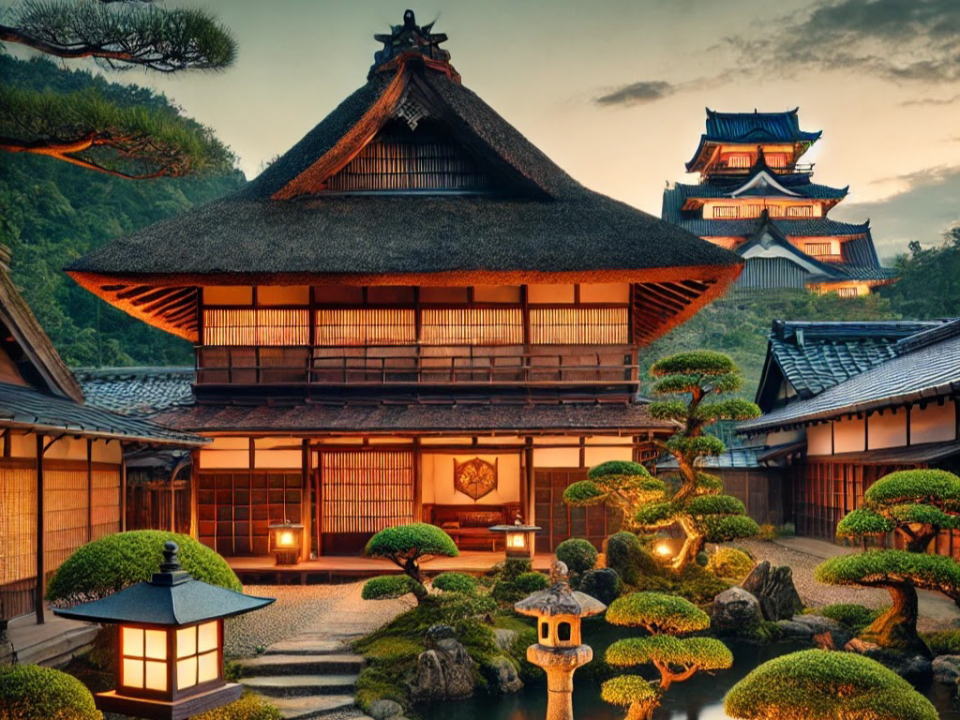
Lafcadio Hearn lived in Matsue for only about a year in 1890 (Meiji 23).
However, during that short time, he was deeply fascinated by the landscapes, culture, and people of Matsue, which greatly enriched his understanding of Japanese culture.
So, what kind of environment did Hearn live in while he was in Matsue?
1. Matsue, a Charming Castle Town
Matsue has flourished as a castle town since ancient times, and even today, historic samurai residences and stone-paved streets remain.
Centered around Matsue Castle, the town is adorned with the serene scenery of Lake Shinji and many shrines and temples, creating a mystical atmosphere.
During Hearn's time, Matsue was experiencing the waves of modernization while still preserving its traditional charm.
His book Glimpses of Unfamiliar Japan contains many descriptions of the beautiful Matsue scenery.
2. The Samurai Residence Where Hearn Lived
Hearn lived in a samurai residence in Matsue while working as an English teacher.
His residence is now preserved as the Lafcadio Hearn Memorial Museum, allowing visitors to experience the atmosphere of that time.
The house features classic Japanese architecture, including a veranda, a garden, and tatami rooms, offering a view of Matsue’s changing seasons, which Hearn deeply loved.
He especially appreciated the quiet winter in Matsue and the breathtaking sunsets over Lake Shinji in spring, which are vividly reflected in his works.
3. Matsue’s Culture and Hearn’s Influence
Matsue is also known as a rare city in Japan where the traditions of wagashi (Japanese sweets) and tea ceremony have flourished.
Hearn took a deep interest in Japanese culture and had opportunities to experience tea ceremony and waka poetry in Matsue.
He was also fascinated by local folklore, and stories such as Mimi-nashi Hoichi from Kwaidan originated from Matsue's legends.
Through his interactions with the people of Matsue, he evolved from being just a foreign observer to embracing Japanese culture deeply, forming a unique identity as a “Japanese” in spirit.
4. Lake Shinji and the Sunset Hearn Loved

Matsue is famous for its beautiful sunsets over Lake Shinji.
Hearn adored this scenery and frequently depicted its magical beauty in his writings.
The sight of the sun slowly sinking into the lake, dyeing the water’s surface in vivid colors, symbolized the beauty of Japan for him.
His works often describe this as “mystical beauty within stillness.”
Conclusion
Matsue, where Lafcadio Hearn lived, is a city where history, nature, and culture blend harmoniously.
During his time there, he deeply immersed himself in Japanese culture and produced many literary works.
Even today, visitors can trace his footsteps through places like the Lafcadio Hearn Memorial Museum and Lafcadio Hearn’s Former Residence to experience the same landscapes and culture he once loved.
Walking through Matsue’s streets, we can still appreciate the beauty of Japan that Hearn once cherished.
References
https://www.hearn-museum-matsue.jp/ (Lafcadio Hearn Memorial Museum)
https://www.kankou-matsue.jp/ (Matsue City Official Tourism Site)
https://www.jnto.go.jp/ (Japan Government Tourism Bureau)
